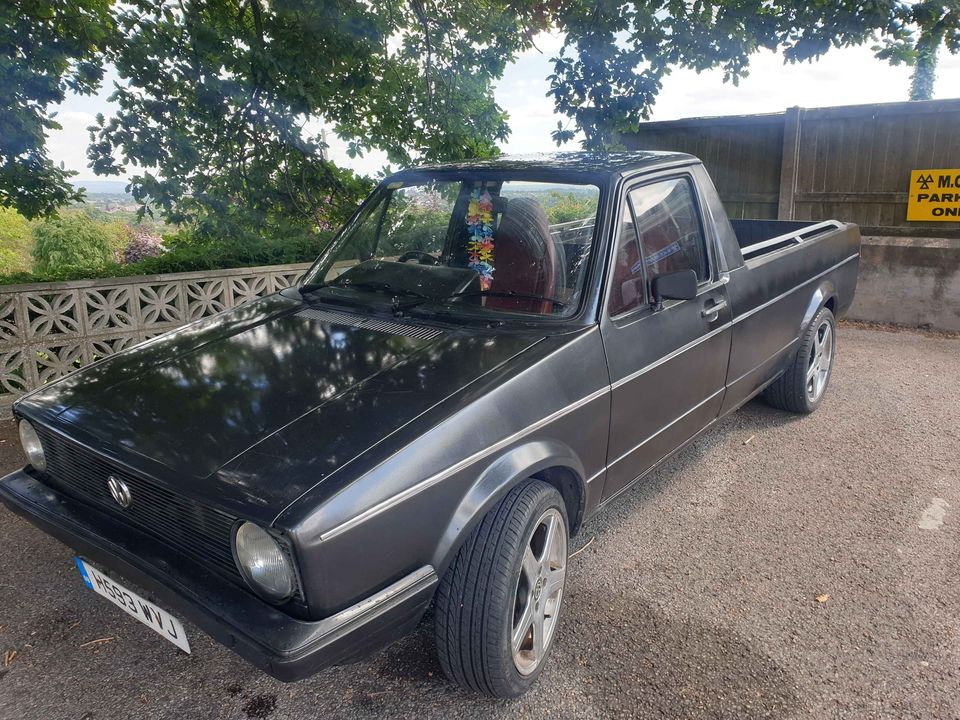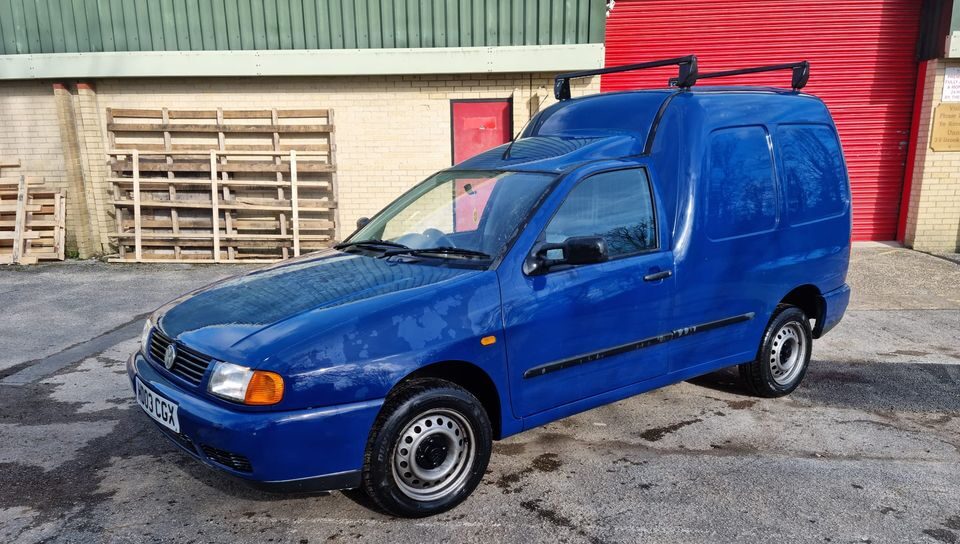The Volkswagen Caddy begins as a compact commercial vehicle that has been in production since 1979.
Over the years, the Caddy has gone through several changes and updates, resulting in several different marks and models. Lets take a closer look at each of the models, specs and history of the Volkswagen Caddy

Mark 1 (1979-1996): The first generation of the Volkswagen Caddy was introduced in 1979 and was based on the Volkswagen Golf Mk1 platform. It was initially available as a two-door pickup truck also known as the Rabbit, with a single-cab or double-cab option. In 1982, a panel van version was added to the lineup.
The Mark 1 Caddy was powered by a range of petrol and diesel engines, with power output ranging from 50 to 70 horsepower. The Mark 1 was produced until 1996, when it was replaced by the Mark 2 Caddy.

Mark 2 (1995-2003): The second-generation Volkswagen Caddy was introduced in 1995 and was based on the Volkswagen Polo Mk3 platform. Like the Mark 1, it was available as a pickup truck, panel van, and passenger van. The Mark 2 Caddy was powered by a range of petrol and diesel engines, with power output ranging from 60 to 110 horsepower. In 2000, the Mark 2 underwent a facelift, which included a redesigned front end and improved safety features. The Mark 2 Caddy was produced until 2003, when it was replaced by the Mark 3 Caddy.
 Mark 3 (2004-2015): The third-generation Volkswagen Caddy was introduced in 2004 and was based on the Volkswagen Golf Mk5 platform. It was available as a panel van, passenger van, and pickup truck, with a range of petrol and diesel engines available. Power output ranged from 75 to 170 horsepower. In 2010, the Mark 3 underwent a facelift, which included a new front end and improved safety features. The Mark 3 Caddy was produced until 2015, when it was replaced by the Mark 4 Caddy.
Mark 3 (2004-2015): The third-generation Volkswagen Caddy was introduced in 2004 and was based on the Volkswagen Golf Mk5 platform. It was available as a panel van, passenger van, and pickup truck, with a range of petrol and diesel engines available. Power output ranged from 75 to 170 horsepower. In 2010, the Mark 3 underwent a facelift, which included a new front end and improved safety features. The Mark 3 Caddy was produced until 2015, when it was replaced by the Mark 4 Caddy. Mark 4 (2015-2020): The fourth generation Volkswagen Caddy was introduced in 2015 and is based on the Volkswagen Golf Mk7 platform. The Mark 4 was available as a panel van, passenger van, and pickup truck, with a range of petrol and diesel engines available. Power output ranges from 75 to 150 horsepower. The Mark 4 Caddy received a facelift in 2020, which included a redesigned front end and improved safety features.
Mark 4 (2015-2020): The fourth generation Volkswagen Caddy was introduced in 2015 and is based on the Volkswagen Golf Mk7 platform. The Mark 4 was available as a panel van, passenger van, and pickup truck, with a range of petrol and diesel engines available. Power output ranges from 75 to 150 horsepower. The Mark 4 Caddy received a facelift in 2020, which included a redesigned front end and improved safety features.Mark 5 (2020-present): Volkswagen’s latest Caddy model is built on the MQB platform, which is also used for several front-wheel drive passenger cars including the VW Golf. This platform provides a more comfortable driving experience, according to Volkswagen. The Caddy’s rear axle has been redesigned, with a new coil spring construction replacing the previous leaf spring design. This new design is intended to improve agility under all load situations while maintaining ride comfort.
The new model comes in two wheelbase options, standard and Maxi, with carrying capacities of 3.1m3 and 3.7m3 respectively. These capacities are slightly lower than the previous Caddy and Caddy Maxi, which offer 3.2m3 and 4.2m3 respectively. The new Caddy is available with four engine options, including 75hp, 102hp (expected to be the best-seller), and 122hp diesel engines, the latter of which is new to the line-up, as well as a 114hp petrol engine. The 75hp and 102hp engines come with a six-speed manual gearbox and front-wheel drive, while the more powerful engines can be paired with an optional seven-speed automatic gearbox. The 122hp engine is only available with the seven-speed automatic transmission.
In terms of culture and modifications, the Volkswagen Caddy has a strong following in the UK, with several Caddy clubs and communities dedicated to the vehicle. Much like the Transporter Community, owners of Caddys in the UK often modify their vehicles with aftermarket parts and accessories, such as lowering kits, alloy wheels, and custom bodywork. Some owners also add performance upgrades, such as engine tuning and exhaust systems. The modifications made to Caddys in the UK often reflect the owner’s personal style and preferences, and many Caddy owners take great pride in their modified vehicles.
In addition to modifications, the Caddy community in the UK also has a strong culture of events and meetups. There are several Caddy-focused shows and events held throughout the year, where owners can show off their vehicles, meet other enthusiasts, and participate in competitions and games. Some of the most popular events include Dubbed Out Festival, the VW Budburg festival, Camper Jam, and the Caddyshack show.
One of the most popular modifications made to Caddys in the UK is lowering the suspension. This involves replacing the stock suspension with a lower setup, which improves the vehicle’s stance and handling. Many owners also add aftermarket wheels and tires, which not only improve the vehicle’s appearance but also enhance its performance. Another popular modification is adding custom bodywork, such as front and rear spoilers, side skirts, and diffusers. This not only improves the vehicle’s appearance but can also improve its aerodynamics and performance.
Performance upgrades are also common, with many owners adding engine tuning and exhaust systems to increase power and improve exhaust note. Some owners even swap out their engines for more powerful ones, such as the 1.8T or 2.0T engines from the Volkswagen Golf.
In summary, the Volkswagen Caddy has a rich history, with several different marks and models produced over the years. The vehicle has a strong following in the UK, with a culture of modifications and customizations that reflect the owner’s personal style and preferences. From lowering the suspension to adding custom bodywork and performance upgrades. The history of the volkswagen caddy means that owners take great pride in their vehicles and can often be found at show and shine competitions across the UK.


